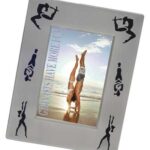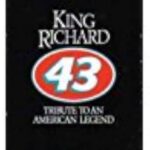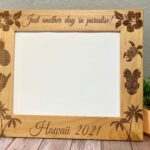I. The Art of Vintage Fashion Reconstruction: Techniques and Tips
II. Essential Tools and Materials for Upcycling Vintage Clothing
III. Styling Your Upcycled Creations: How to Embrace and Enhance Vintage Aesthetics
The Art of Vintage Fashion Reconstruction: Techniques and Tips
Welcome to the enchanting world of vintage fashion reconstruction! If you’ve ever stumbled upon a stunning piece from a bygone era and thought, “If only I could wear this,” you’re not alone. Vintage clothing has a charm that speaks to creativity and individuality, and with the right techniques, you can transform outdated styles into something fresh and fabulous.
Understanding the Basics of Reconstruction
First things first, it’s essential to understand what vintage fashion reconstruction truly is. Essentially, it’s the art of taking old, often forgotten garments and revamping them to suit modern tastes. This not only breathes new life into the pieces but also allows you to express your unique style. So, where do we start?
Techniques to Revamp Vintage Pieces
Here are some creative techniques to consider when reconstructing vintage clothing:
- Tailoring: This is the classic approach! Adjusting the fit of a vintage garment can make a world of difference. Whether it’s taking in the waist, shortening a hem, or even reshaping sleeves, a good tailor can work magic.
- Layering: Combining vintage pieces with contemporary items can create a stunning look. For example, pair a vintage dress with a modern jacket or a trendy belt to add a touch of today’s style.
- Patchwork and Textiles: Don’t shy away from mixing fabrics! Using scraps from other vintage pieces or contrasting textiles can create unique patchwork designs that reflect your personality.
- Embroidery and Appliqué: This technique transforms a plain garment into a work of art. Hand-stitched details can add a playful or elegant touch, depending on your vision.
- Dyeing Techniques: If a garment has faded or bears an unappealing color, dyeing it can revive it! Experiment with tie-dye or ombre techniques to give it a modern twist.
Tips for Successful Reconstruction
Now that you have some techniques in mind, let’s explore some handy tips to ensure your reconstruction journey is a success:
- Research: Before diving in, take some time to look up vintage fashion trends. Understanding the era of your piece can inspire your reconstruction decisions.
- Choose Wisely: Not every vintage piece is a candidate for reconstruction. Look for items that have a strong base—good fabric and structure are key!
- Be Patient: Reconstruction is an art form that takes time. Don’t rush the process; enjoy experimenting and learning.
- Document Your Process: Take photos of your reconstruction journey! This not only helps you track your progress but can also inspire others who share your passion.
- Connect with Communities: Join online forums or local crafting groups where you can share ideas and get feedback. Engaging with like-minded individuals can spark new ideas and motivation.
Vintage fashion reconstruction is not just about making something old into something new; it’s about celebrating the stories behind those garments while infusing them with your personal style. So grab those scissors, unleash your creativity, and start your journey into the wonderful world of vintage fashion reconstruction!
Essential Tools and Materials for Upcycling Vintage Clothing
Hey there, fellow fashion enthusiast! If you’re diving into the wonderful world of upcycling vintage clothing, you’re in for a treat. Not only do you get to give old garments a new lease on life, but you also have the chance to express your unique style. Before you start your creative journey, let’s chat about the essential tools and materials you’ll need to make your vintage fashion reconstruction a breeze.
Tools You Can’t Live Without
First off, let’s talk about the tools that will help you transform those beautiful, albeit worn, pieces into your next fashion statement. Here’s a handy list:
- Sewing Machine: A reliable sewing machine is the heart of any upcycler’s toolkit. It allows you to quickly stitch up hems, make alterations, and create new designs. Don’t shy away from investing in one that suits your needs, even if it’s a secondhand model!
- Scissors: A good pair of fabric scissors can make all the difference. Make sure they’re sharp and dedicated solely to fabric cutting to ensure clean edges.
- Seam Ripper: Mistakes happen—trust me! A seam ripper is your best friend for taking apart seams or removing stitches without damaging the fabric.
- Measuring Tape: Accurate measurements are crucial when upcycling. A flexible measuring tape will help ensure that every piece fits just right.
- Pin Cushion: Keep your pins organized and within reach with a pin cushion. You’ll be using pins often to hold fabric in place before sewing, so this little tool is invaluable.
Materials to Stock Up On
Now that we’ve covered the essential tools, let’s delve into the materials you’ll want to have on hand. Depending on the upcycling project, your materials may vary, but here are some basics to get you started:
- Fabric: Whether you’re using scraps from other projects or upcycling entire garments, having a variety of fabrics can inspire new designs. Look for interesting patterns, textures, and colors!
- Thread: Make sure to stock up on a range of thread colors! Matching the thread to your fabric can make a world of difference in the final look.
- Buttons and Zippers: Vintage finds often come with unique buttons and zippers. Collect these items for easy upgrades to your projects, and don’t hesitate to use them in creative ways!
- Embroidery Floss: If you’re feeling adventurous, embroidery floss allows you to add decorative stitches or embellishments that can elevate your creation.
- Iron: A good iron is essential for pressing fabric and ensuring your seams are crisp. It’s a simple step that can enhance the overall finish of your garment.
Getting Started with Upcycling
With these tools and materials at your disposal, you’re well on your way to creating stunning upcycled vintage pieces. Remember, the key to successful upcycling is experimentation and creativity. Don’t be afraid to think outside the box! So gather your supplies, roll up your sleeves, and get ready to transform those vintage treasures into something fabulous.
Styling Your Upcycled Creations: How to Embrace and Enhance Vintage Aesthetics
Welcome to the wonderful world of vintage fashion! If you’ve recently upcycled some unique pieces, you might be wondering how to style them for that perfect vintage vibe. Let’s dive into some tips and tricks to ensure your upcycled creations not only shine but also reflect the charm of bygone eras!
1. Understand the Era
Before styling, take a moment to understand the era your garment is inspired by. Different time periods have distinct characteristics:
- 1920s: Think flapper dresses, beaded embellishments, and cloche hats.
- 1950s: Look for full skirts, tailored jackets, and bold prints.
- 1970s: Embrace bohemian styles, high-waisted jeans, and flowy fabrics.
Knowing the aesthetic can guide your styling choices and help you mix and match pieces more effectively!
2. Mix and Match
One of the joys of vintage fashion is the ability to mix and match different styles and eras. Don’t hesitate to combine your upcycled garment with contemporary pieces or other vintage items. Here’s how:
- Pairing: A vintage blouse can look stunning with modern high-waisted jeans.
- Layering: Use a vintage jacket over a simple dress for added flair.
- Accessorizing: Incorporate vintage accessories like brooches, hats, or handbags to elevate your look.
Mixing styles not only showcases your creativity but also adds a personal touch to your outfit!
3. Play with Proportions
Playing with proportions can bring your upcycled creations to life. For instance, if you have a voluminous vintage skirt, balance it with a fitted top. Conversely, if you’re wearing a loose, oversized vintage tee, try pairing it with a slim-fit bottom. This contrast creates a dynamic look that’s both flattering and interesting!
4. Use Color Wisely
Color is a critical aspect of styling. Vintage pieces often come in unique colors that can sometimes be challenging to pair. Here are some ideas:
- Go Monochrome: Choose different shades of the same color for a cohesive look.
- Complementary Colors: Use the color wheel to find colors that complement your vintage piece.
- Earth Tones: These classic tones often work beautifully with vintage fabrics.
Experiment with color until you find combinations that resonate with your personal style!
5. Don’t Forget Footwear
Footwear can make or break an outfit, especially when it comes to vintage styling. Try these options:
- Classic Heels: Perfect for adding a touch of elegance to any vintage dress.
- Chunky Sneakers: These can add a contemporary twist to a vintage outfit.
- Vintage-inspired Boots: Ideal for adding a rugged yet chic edge to your look.
Choose shoes that not only match but also enhance the overall vintage aesthetic of your outfit.
Styling your upcycled creations is all about creativity and having fun! So, embrace the quirks of vintage fashion and wear what you love. Happy styling!










Comments